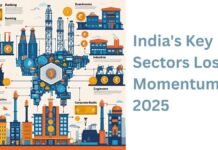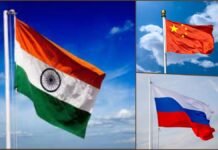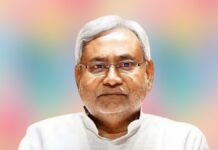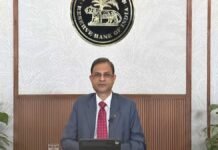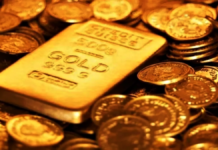
Key Points
- Retail inflation in India plunged to 2.10% in June 2025, the lowest in over six years.
- Food prices saw a dramatic drop, with food inflation at -1.06%.
- Kerala, Punjab, and Jammu & Kashmir recorded the highest state inflation; Telangana, Andhra Pradesh, and Odisha had the lowest.
- The Reserve Bank of India slashed its FY2025-26 inflation forecast to 3.7%.
- Inflation rates across most states are converging toward the national average, aided by policy reforms and GST.
New Delhi: India’s retail inflation, measured by the Consumer Price Index (CPI), dropped sharply to 2.10% in June 2025, marking its lowest point since January 2019 and the lowest in 77 months. This is a steep fall from 2.82% in May and 3.16% in April 2025. For context, the last time inflation was this low was in early 2019, when it touched 2.05%.
The primary driver behind the cooldown is the persistent decline in food prices. Food inflation for June 2025, as measured by the Consumer Food Price Index (CFPI), contracted by -1.06% the lowest in over six years. Rural and urban areas recorded food inflation of -0.92% and -1.22% respectively.
Statewise Inflation: Where Is the Pinch the Hardest?
States with Highest Inflation (June 2025)
| State | Inflation Rate (%) |
|---|---|
| Kerala | 6.7 |
| Punjab | 4.7 |
| Jammu & Kashmir | 4.4 |
Kerala’s inflation rate stands out significantly, with prices for essentials soaring well above the national average. Punjab and Jammu & Kashmir follow, both registering substantial increases in living costs.
States with Lowest Inflation (June 2025)
| State | Inflation Rate (%) |
|---|---|
| Telangana | -0.9 |
| Andhra Pradesh | 0.0 |
| Odisha | 0.5 |
Telangana enjoys the distinction of the lowest (and negative) inflation, providing major relief to its consumers. Andhra Pradesh and Odisha also registered very mild inflation, well below the national mean.
Out of 22 states and union territories analyzed, 12 posted inflation below the national average of 2.1%.
Why Are State Inflation Rates Converging?
According to State Bank of India’s Group Chief Economic Advisor, Soumya Kanti Ghosh, state-level inflation differences are steadily narrowing. Factors include:
- Implementation of GST, which reduces supply chain inefficiencies and price disparities.
- Improved logistics and policy measures, making price spikes rarer and less volatile between regions.
As a result, many states that previously faced high inflation are now gravitating toward the national average.
RBI’s Revised and Brightened Outlook
Amid the ongoing moderation, the Reserve Bank of India (RBI) revised its FY2025-26 retail inflation forecast down to 3.7% from its earlier estimate of 4%. For the April-June quarter, the projection was cut from 3.6% to 2.9%.
The central bank cites durable food supply improvements, robust harvests, and a likely above-normal monsoon as key reasons for the optimistic inflation forecast. The RBI also shifted to a neutral policy stance after a repo rate cut, signaling confidence in price stability ahead but noting the need to stay watchful for weather and global risks.
Inflation Trends at a Glance
| Month | CPI Inflation (%) | Food Inflation (%) (CFPI) |
|---|---|---|
| April 2025 | 3.16 | 0.99 |
| May 2025 | 2.82 | 0.99 |
| June 2025 | 2.10 | -1.06 |
What This Means for You
- Consumers nationwide, especially in states like Telangana, are already seeing price relief at the grocery store.
- States with higher inflation may experience prioritization of targeted policy intervention.
- The broader downward trend sets a positive tone for economic growth and household budgets in FY2025-26.
India’s inflation story in 2025 is one of relief for shoppers and optimism for policymakers, with converging trends pointing toward a more stable and predictable price environment nationwide.




